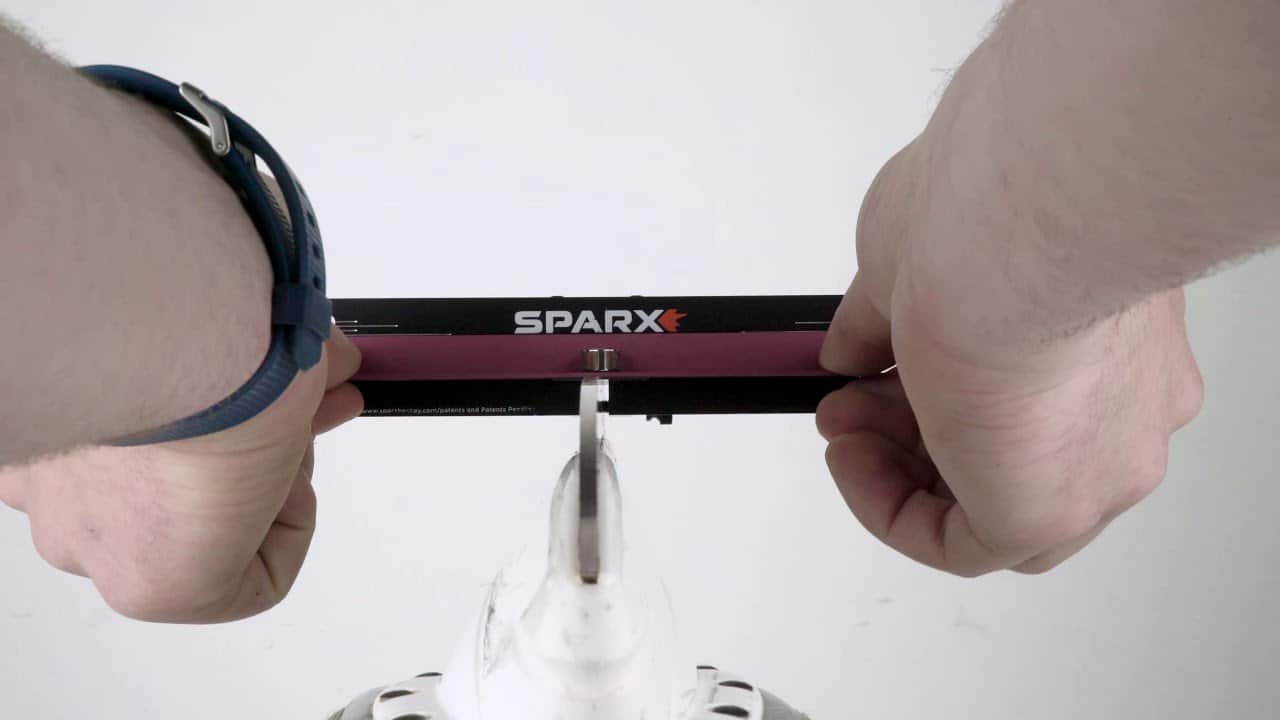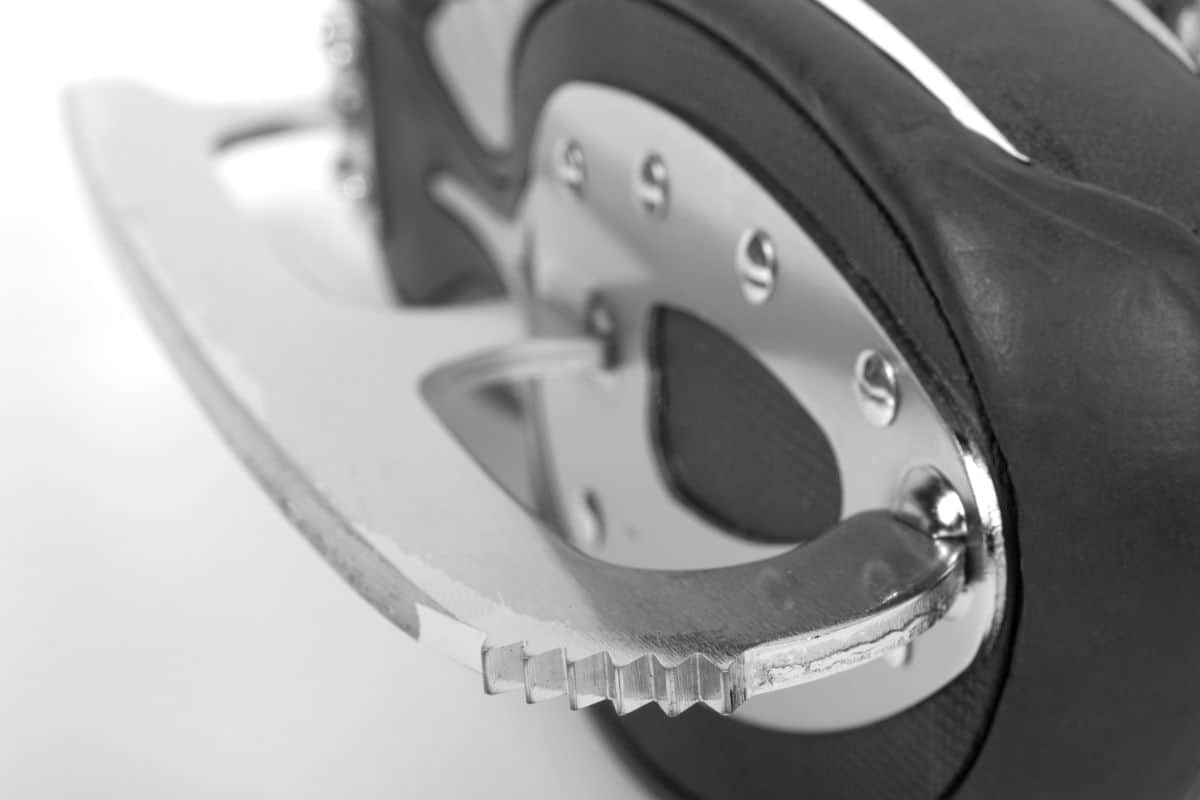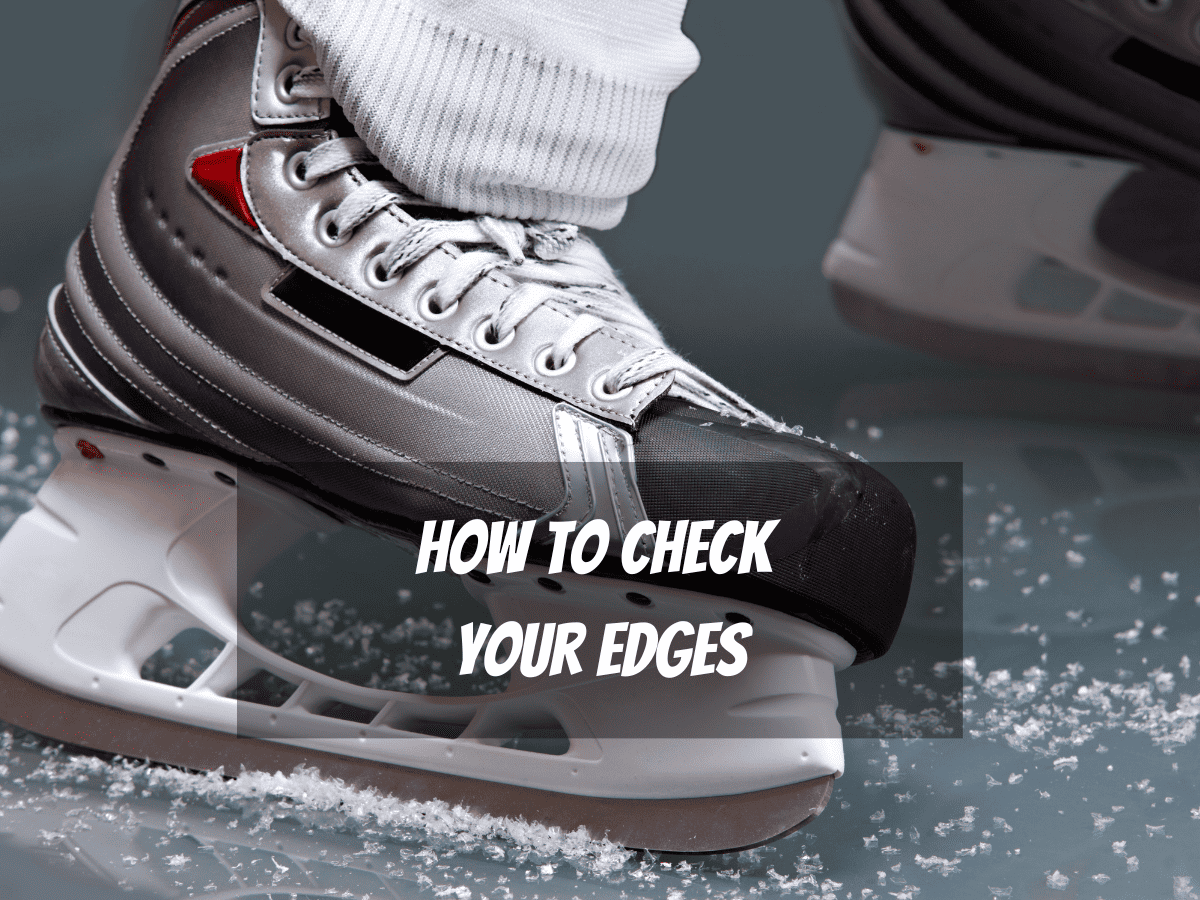No matter how careful you are, your edges will always dull and get nicks. Which is why it is important to know how to check your blades so you can be sure that your skates are treated well.

Knowing how to check your edges with your hands will save you a lot of time and it only takes about a minute to perform.
How Can You Tell Your Edges Are In Good Condition
The easiest way to see if your edges are in good condition is just to look at them.
If they have been freshly sharpened, then you probably don’t need to check on them as often unless you feel something off while on the ice.
When you look at them, make sure they are clean (no rust or gunk), have a grip on both sides of the blade, and are filed into two points with a curved hollow between them.
You want the hollow of the blade to be empty.
In a similar vein to checking if they are in good condition, simply looking at your edges will give you a good indication of when they need help or need to be further checked.
If you see rust, gunk, nicks or dull edges you may need to go in and check your edges physically.
How To Check Your Edges Physically
After visually checking your blade, you may need to go in with your hands to determine how your edges are in more depth.
Of course, even if your blades have dulled, you can still cut yourself if you press down on them, so follow these steps with caution.
Sometimes you can’t see everything with your eyes, so checking with your fingers will reveal anything you may have missed after the initial scan.
The first check is to gently feel the edges. Do this at a 45-degree angle with your fingertip or fingernail going up and down the blade, don’t press too hard, or you might injure yourself.
This will help you feel if any of your blades are dull and if your finger or fingernail catches then you know there is a nick there.
Focus on the rocker and midsection of the blade as they are the parts most in use.
Next is to check for bite, gently brush back and forth across the blades with your thumb going up and down the skate.
Brush perpendicular to the blade for best results. The grip should catch slightly on your fingerprint. Some skaters check one edge at a time.
Grip is important for stability, you don’t want to be slipping on the ice as ironic as that is.
Skaters have different preferences of how much grip they want so be aware of this when checking.
Some people even balance a coin on the edges to check they are the same length. There are also actual devices to check for even edges, make sure to test across all the sections of your blade.
Edge Maintenance

Regular maintenance is key to keeping your edges in their best possible condition. The key is to take care of them before they get too bad since skating on sharp skates is safer than dull ones.
Of course it is all up to skater preference. Some skaters always need a perfectly sharp edge while others don't mind skating on a slightly bull blade for a little bit.
If you are one of the people who prefer skating on dull blades you may need to talk with a professional about the depth of your hollow.
The deeper the hollow the more bite but less glide. On the other end of the scale the smaller the radius of the hollow the more glide but less bite.
This preference can depend on the weight of the skater (the heavier the deeper the radius) and can also depend on what you are using your skates for e.g. figure skating and hockey.
People average 20-40 hours before their skates need sharpening.
It would be good to keep note of your own average so you have a rough idea of when to book a sharpening appointment.
Regular Skate Maintenance
- When transporting your skates, do it in a bag and not over your shoulder. Carrying skates over your shoulder can damage the laces and your clothes.
- When you leave the ice, make sure a hard skate guard is put on the blade.
- Wipe them with cloth to avoid rust; moisture is the enemy. Dry them with an absorbent cloth, wait 5 minutes, and then dry again for best results.
- Dry your skate guards if need be.
- When your skates are in your bag make sure they have soft blade covers on. This stops them from bumping into each other and also further dries them in the bag.
- Don’t store your skates with a guard on them. This can trap any leftover moisture in them and cause rust.
- Let them dry at room temperature when at home. Drying them with heaters can cause the leather to warp.
- When storing your skates for a long period of time, make sure they are placed where no force would be put on the blades.
- Check your laces aren’t thinning in places. It’s best to keep a spare set on you.

